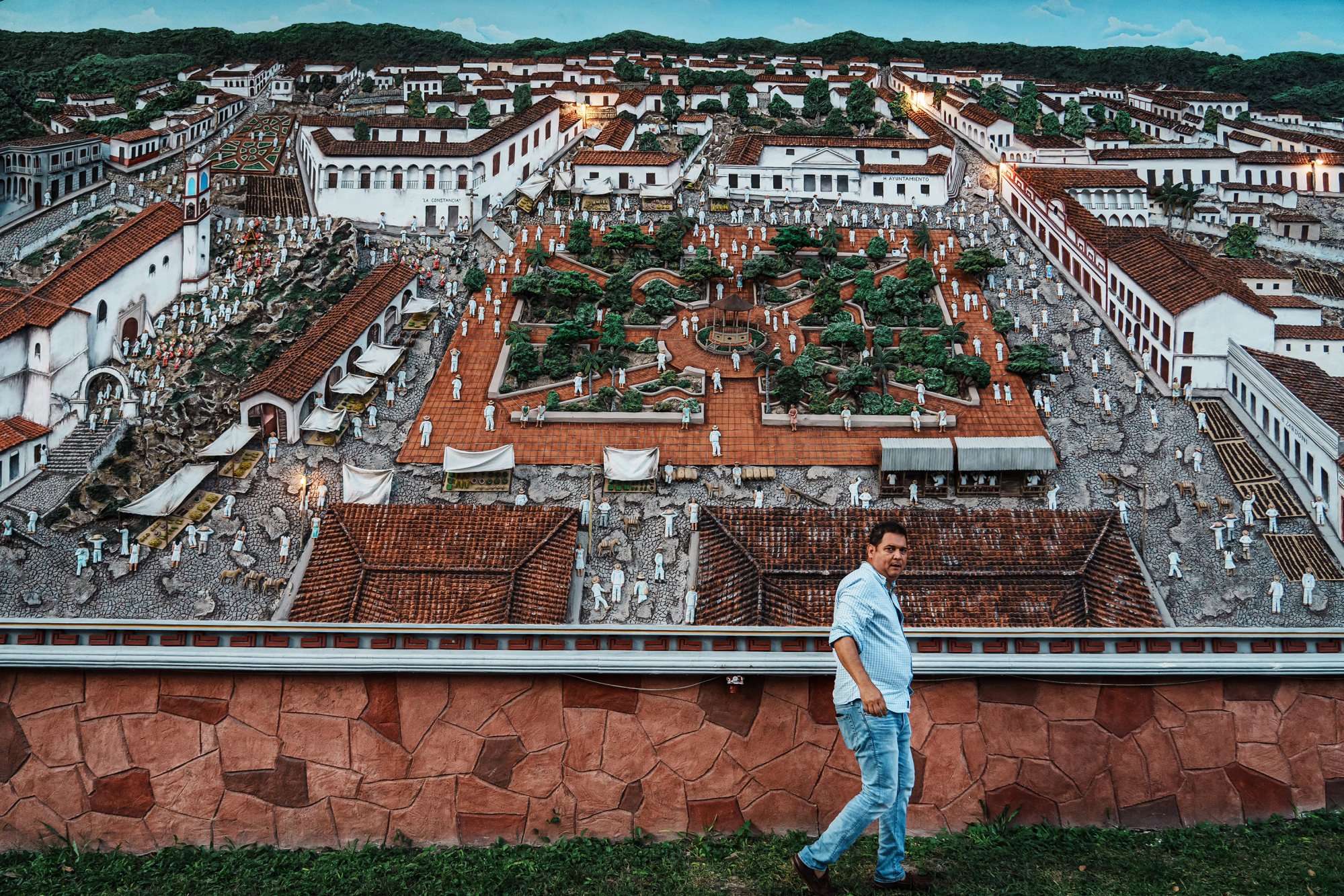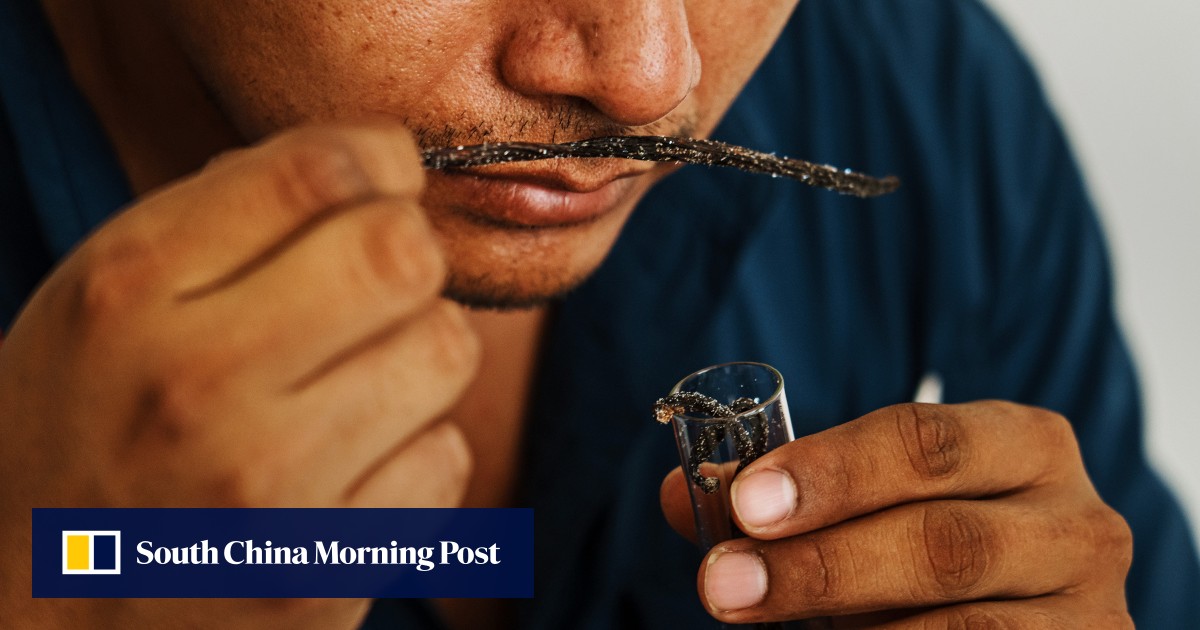Could a vanilla renaissance finally bloom in Mexico?
In this city of 160,000, artisans make figurines with vanilla’s shiny dark brown stems. Restaurants serve vanilla-infused dishes. And a prominent plaque by the town square tells the “Legend of Vanilla”, the tale of how vanilla originally grew from the blood of a beautiful indigenous princess who was decapitated by priests for having a romantic affair.
“If you have bad thoughts, they disappear, if you’re angry, it disappears, because the aroma has an effect of high relaxation,” says Lucio Olmos Morales, a local artisan who often works at a table on his porch weaving vanilla pods into crowns, rosary beads and flowers.
‘The expression of love. Period’: where perfumers get jasmine from
‘The expression of love. Period’: where perfumers get jasmine from
The indigenous Totonac people discovered the vanilla vines that once grew wild in this rainy region, naming the orchids Xanat. They used it for fragrance – women perfumed their hair with the pods – but there is no record of the Totonac using vanilla in cooking, according to Tim Ecott, author of the book Vanilla: Travels in Search of the Ice Cream Orchid.
The Spanish colonisers eventually took Mexico’s vanilla to Europe, where it was consumed by the aristocracy and fed a growing craving for hot chocolate. Vanilla was naturally pollinated by bees in Mexico, and when Europeans attempted to grow the plant back home they rarely got it to produce pods.

But in the mid-19th century, a slave on the Indian Ocean island of Reunion discovered how to efficiently hand-pollinate vanilla.
In the following decades, the growth of artificial vanilla and competition with Madagascar, the current market leader, contributed to the decline of Mexico’s vanilla production.
“The market turned to a massified cheap product and Mexico competed for a while but couldn’t really keep up with that,” says Emilio Kouri, a historian and director of the Katz Centre for Mexican Studies at the University of Chicago in the US. “People would say, ‘I don’t care, for my Twinkies I’ll just use artificial vanilla.’”
Mexico is the world’s third-largest natural vanilla producer, behind No. 2 Indonesia, according to 2022 data from the US Food and Agriculture Organisation. Most of the green vanilla that Mexico produced in 2022 – 515 tonnes, according to the Mexican government – was sold locally.

These days, those tied to Mexico’s natural vanilla industry are working to increase the spice’s local consumption and production, saying that Mexicans should be encouraged to help small-scale farmers and uphold their vanilla heritage.
Its biggest challenge today is artificial vanilla. Gaya, the leading producer of vanilla in Veracruz, sells a 4-ounce (113g) bottle of real vanilla extract for about US$5 – several times the cost of artificial vanilla.
“In Mexico, people don’t consume natural vanilla, it’s that simple,” said its director, Norma Gaya.

Her family-run company, which grows vanilla pods and also buys the fruit from farmers across Mexico, works with university scientists to produce healthier plants, improve cultivation techniques and offer classes to local growers.
A lab on its property in Gutierrez Zamora, a city near Papantla, contains jars of vanilla plants that have been cloned to match varieties that are disease-resistant and have attractive smells.
Gaya says that the government needs to better enforce the proper labelling of vanilla products, so that artificial vanilla is not passed off as natural.
In the meantime, she and others have tried to ramp up interest in the orchid, holding a local vanilla festival and conferences to bring together vanilla experts.
A history of scents: roses, henna, attar in India’s perfume capital Kannauj
A history of scents: roses, henna, attar in India’s perfume capital Kannauj
Juan Salazar Garcia, who comes from families that have grown vanilla for generations, has worked with a chemist to help sell natural vanilla liqueur, extract and perfume, as well as an artificial vanilla air-freshener after requests from customers.
Clients ask him why his vanilla extract is expensive, pointing to cheaper products they find online that are falsely advertised as natural. But Salazar hesitates to expand his artificial line.
“As a producer, where would be the value in what I do?” he says. “I need to defend my work.”

The farming brings him an annual income of about US$47,000 a year, which he uses to maintain his plantation, and he hopes to grow the business with his three sons. He admits he barely consumed natural vanilla growing up, but believes he can expand locals’ interest “at least a little bit”.
Chefs have tried to do that through vanilla-infused dishes.
‘It gives me a smile on my face’: how fragrances promote wellness
‘It gives me a smile on my face’: how fragrances promote wellness
Vanilla, Munoz explains, goes well with subtle flavours and must be used carefully with strong spices such as chilli that could overtake the vanilla.
More than two dozen chefs contributed recipes to his 2008 cookbook, La Vainilla Mexicana, many combining the ingredient with seafood. Among the dishes: avocado soup with vanilla, apple salad with a vanilla vinaigrette, and duck with a chocolate and vanilla sauce.
“Of course we’d have vanilla ice cream and custard, but most of the plates were gourmet and all were made not just with the excuse of using vanilla but with vanilla as a protagonist,” he says.

In Papantla, tourists who want to try vanilla dishes visit the restaurant Nakú, which translates to “heart” in the Totonac language.
The open-air restaurant, which displays and sells vanilla products, spends about US$900 a month on four gallons of vanilla extract (15 litres) and about 125 vanilla pods. Patrons can order shrimp served with a creamy sauce made with vanilla extract, a chayote squash soup with vanilla seeds, a vanilla liqueur drink called Papenteco Kiss and plantains flambéed with vanilla ice cream.
Why do hotels smell so good and who creates that ‘signature scent’?
Why do hotels smell so good and who creates that ‘signature scent’?
Papantla’s vanilla history also lives on through art. The local Ancestral Knowledge of Vanilla restaurant and museum displays a 2.4-foot (73cm) vanilla-woven Virgin Mary made with 13 pounds of vanilla – which is paraded through the streets every December – and a photograph of a seven-and-a-half-foot pyramid made with 33,000 vanilla pods and weighing 264 pounds.
In summer 2023, Lucio Olmos Morales, the artisan who weaves vanilla on his porch, received a special order.
The local church, along with Totonac authorities, had selected Juanita Olarte, a 24-year-old teacher, to be ceremoniously named a protector of Totonac culture at a Mass commemorating the 100th anniversary of the diocese. Olmos was commissioned to make a vanilla headdress to distinguish Olarte in her new role.

He used 130 vanilla pods, high-quality stems carrying enough oil so they could be bent into shapes without breaking. The headdress’ elements included a sun with a gem at its centre to represent Christ, corn leaves and flowers.
As it was placed on Olarte’s head in August at the front of the church, she smelled its strong sweet scent. The vanilla reminds Olarte of her grandfather, who taught her as a small child to pollinate the vanilla plants he grew.
“It’s feeling closer to my loved ones,” she says of wearing the vanilla headdress. “I feel their embrace. Although they’re not with me, they feel present.”
